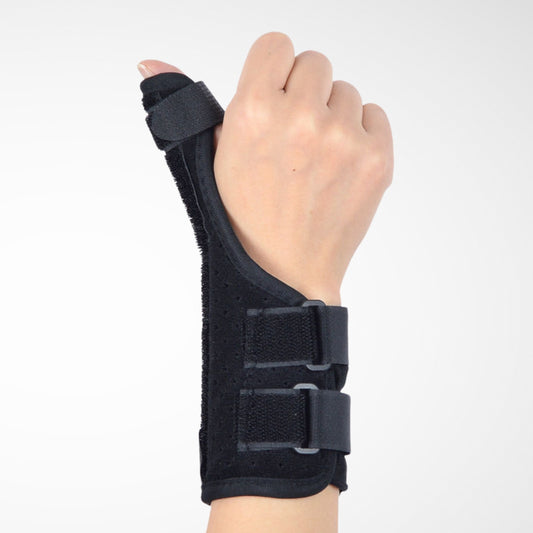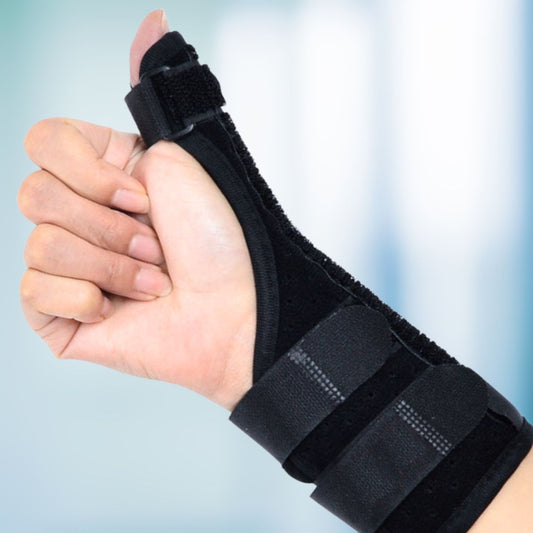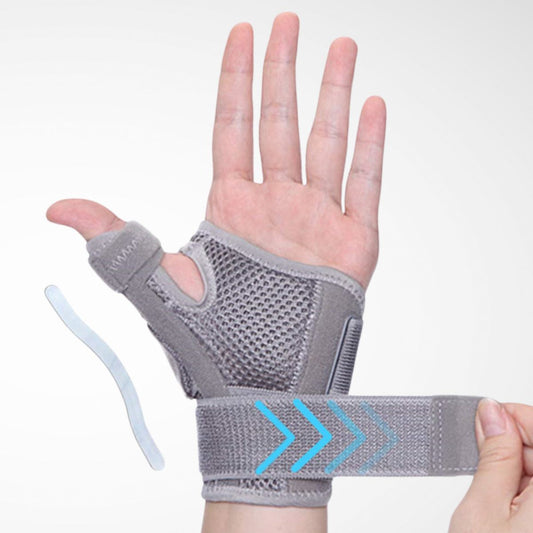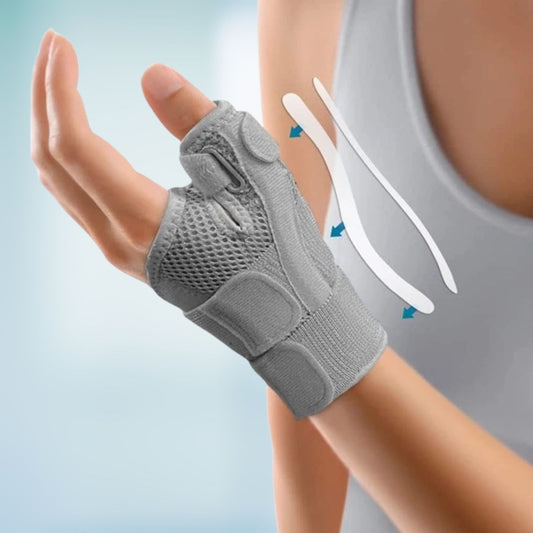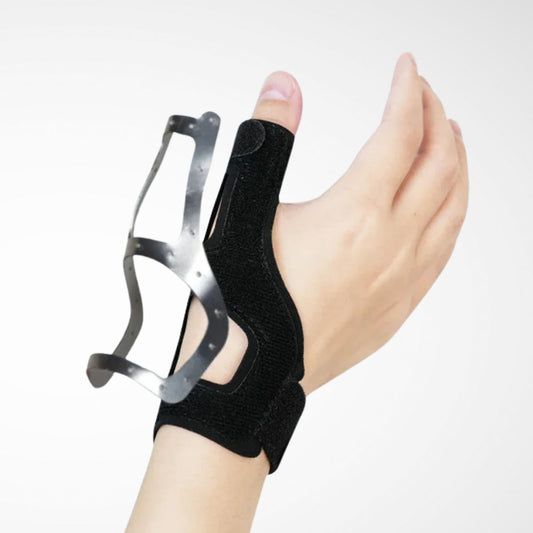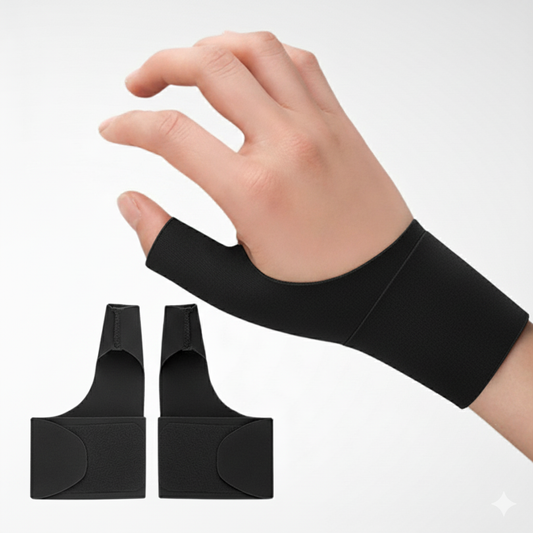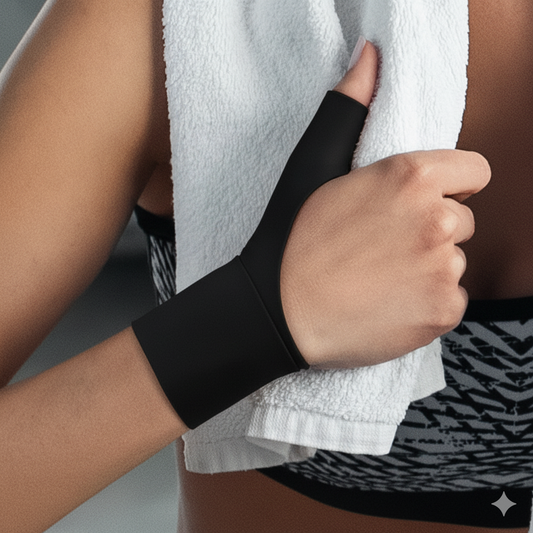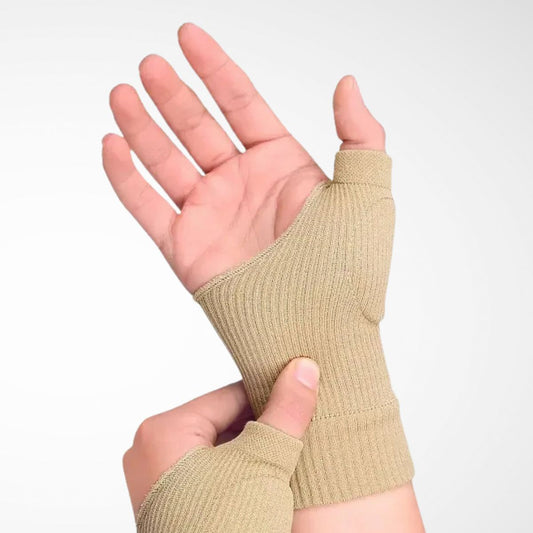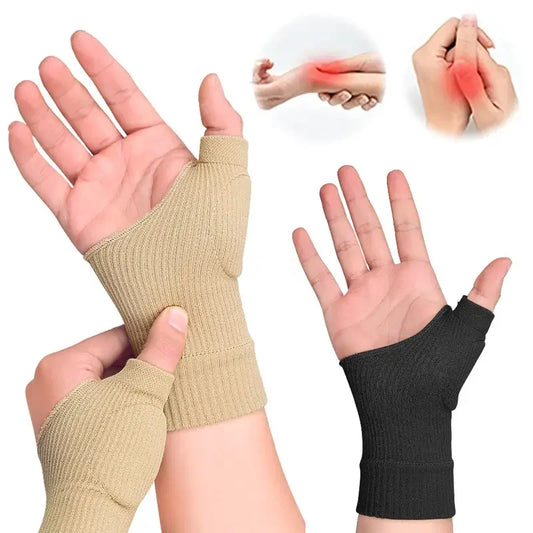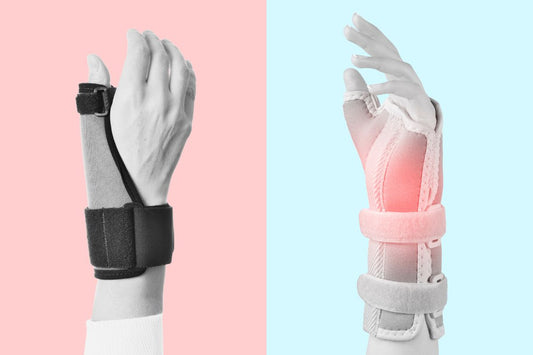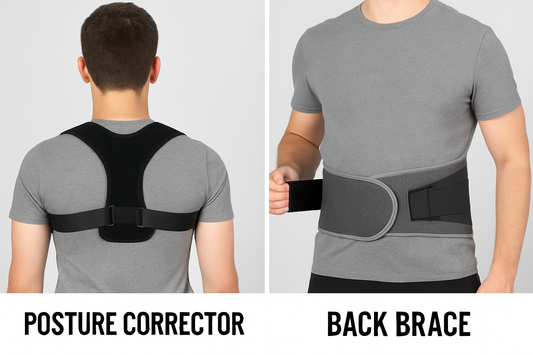If you're dealing with thumb pain or recovering from a thumb injury, chances are you’ve come across the terms thumb stabilizer and thumb spica splint. At first glance, they might seem interchangeable — and in many casual conversations, they are. But when it comes to support, structure, and recovery, there are a few distinctions worth understanding.
In this article, we’ll break down what each term means, how they differ (or overlap), and which one may be the better fit for your condition.
Are Thumb Stabilizers and Thumb Spica Splints the Same Thing?
Not exactly — but they’re often used to describe similar types of orthopedic supports designed to protect the thumb joint.
- A thumb stabilizer is a general term for any brace that supports and limits motion in the thumb, especially at the base (the carpometacarpal or CMC joint).
- A thumb spica splint is a specific type of stabilizer that immobilizes both the thumb and the wrist using a “spica” — a rigid or semi-rigid support structure that wraps around and extends past the wrist joint.
Think of it this way:
➡️ All thumb spica splints are thumb stabilizers, but not all thumb stabilizers are spica splints.
Key Differences: Structure and Support
| Feature | Thumb Stabilizer | Thumb Spica Splint |
|---|---|---|
| Support Level | Moderate support, allows limited motion | Maximum support, restricts thumb + wrist |
| Immobilization | Primarily the thumb joint | Thumb, wrist, and part of the forearm |
| Comfort | Slimmer, often softer design | Bulkier, more rigid or semi-rigid |
| Typical Use Duration | Short-term use, daily activities | Extended wear for healing or post-injury care |
| Adjustability | Often with velcro or compression fabric | Includes rigid inserts or splint panels |
Common Use Cases for Each
Thumb Stabilizer
A thumb stabilizer is best suited for situations where movement is still needed, but the joint could benefit from light to moderate support.
Ideal for:
- Mild sprains or strains: If you’ve bent your thumb awkwardly while doing something simple — like grabbing a heavy bag or during yoga — and now feel minor pain or discomfort, a stabilizer can offer just enough support without over-restricting your hand.
- Minor repetitive stress injuries: Think “texting thumb,” “gamer’s thumb,” or discomfort after long hours of scrolling or holding a phone. People who do digital drawing, coding, or frequent typing may also experience micro-strains that a stabilizer helps manage.
- Everyday joint instability or arthritis: Some people experience occasional thumb weakness or popping from past injuries or chronic arthritis. A stabilizer provides the kind of support that helps with simple tasks like cooking, writing, or using utensils.
- Light support during activities: Great for sports where grip and dexterity still matter — such as tennis, golf, or lifting weights — especially when you don’t want a bulky or immobilizing brace getting in the way.
Thumb Spica Splint
The thumb spica splint goes a step further by offering stronger immobilization, often extending down to the wrist. It’s typically prescribed or recommended when the thumb needs to be stabilized to heal properly — especially after injury, surgery, or with serious conditions.
Ideal for:
- De Quervain’s tenosynovitis: A painful condition caused by irritation of the tendons on the thumb side of the wrist. If holding a baby, lifting grocery bags, or twisting a doorknob causes sharp pain, a spica splint can reduce tendon movement and promote healing.
- Gamekeeper’s thumb / Skier’s thumb: Common sports-related injuries involving torn or overstretched ligaments at the base of the thumb, often from falls or sudden force. A rigid splint is essential here to prevent further damage during recovery.
- Moderate to severe sprains or ligament injuries: If your thumb swelled up after a fall or feels unstable when gripping, a spica splint can keep the joint still while tissues repair.
- Post-surgical recovery or fracture management: After surgery or in cases of small fractures in the thumb or lower hand, doctors often recommend spica splints to ensure zero motion and optimal healing.
- Immobilizing during flare-ups: For people with inflammatory arthritis or tendonitis, occasional flare-ups can be intense. Wearing a spica splint during these episodes can reduce pain and protect the joint from overuse.
Can They Be Used Interchangeably?
Sometimes, yes — especially when the terms are used outside of a medical context. In fact, many retail platform listings, brands, and everyday users often use “thumb spica splint” and “thumb stabilizer” interchangeably, even though they may refer to slightly different types of braces.
This overlap in terminology can make shopping confusing. A product labeled as a thumb stabilizer might actually include spica-style support, and vice versa. That’s why it’s more important to understand what level of support and immobilization your condition needs, rather than getting caught up in the exact wording.
- If your condition involves both wrist and thumb pain, or your doctor has mentioned “immobilization” or a spica-style brace, then a thumb spica splint with more rigid structure is likely the right fit.
- If you’re looking for light, everyday support for thumb strain, arthritis, or occasional flare-ups while keeping the wrist mobile, a thumb stabilizer will usually suffice.
At BetterSpine, our thumb support collection includes both rigid spica-style braces and more flexible thumb stabilizers — because what truly matters is matching the product to your pain level, mobility needs, and recovery stage.
Knowing the difference helps you choose smarter and heal faster.
How to Choose the Right One
Start by asking yourself:
- Is the pain isolated to the thumb, or does it extend to the wrist?
- Have you been diagnosed with a specific condition (e.g., De Quervain’s)?
- Do you need rigid immobilization, or just light support during activity?
- Will you be wearing it all day or just during certain tasks?
If you're unsure, always consult a healthcare professional. Though uncommon, wearing the wrong type of brace could delay recovery or worsen symptoms.
Final Thoughts
When it comes to thumb pain relief, choosing between a thumb stabilizer and a thumb spica splint depends on how much support your condition actually needs. While both are designed to protect and support the thumb joint, they differ in how much movement they restrict, what kind of conditions they address, and how comfortable they are for everyday use.
If your pain is mild, comes and goes with daily activities, or stems from repetitive stress (like texting, writing, or gaming), a thumb stabilizer may be all you need. It allows for more freedom of movement while still offering targeted support — making it a go-to for arthritis, joint fatigue, or light sprains.
On the other hand, if you’re recovering from a more serious injury, surgery, or dealing with a condition that calls for immobilization — like De Quervain’s, skier’s thumb, or tendon irritation — a thumb spica splint will provide more rigid support and limit harmful movement so healing can take place properly.
It’s worth noting that in both casual conversation and even product labeling, these terms are sometimes used interchangeably. But recognizing the specific needs of your thumb — and choosing a support that aligns with your pain level and daily demands — can make all the difference in your recovery.
And if you're ever unsure, consult with a healthcare professional. They can help you determine the right brace and recovery plan based on your symptoms and lifestyle.


